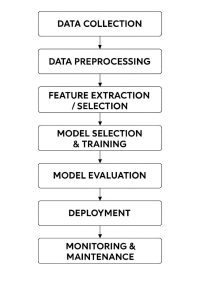Збирач потоків
Paripath Inc. - Negative delays aren't so negative after all !
 | submitted by /u/1Davide [link] [comments] |
Weekly discussion, complaint, and rant thread
Open to anything, including discussions, complaints, and rants.
Sub rules do not apply, so don't bother reporting incivility, off-topic, or spam.
Reddit-wide rules do apply.
To see the newest posts, sort the comments by "new" (instead of "best" or "top").
[link] [comments]
EEVblog 1700 - Do Dumpster LCD TV's Make Good LED Light Panels?
Veeco’s Q2 revenue, operating income and EPS exceed guidance, but constrained by tariffs
Renesas Intros 64-bit MPU Aimed at AI-Centric High-Performance HMI Designs
DMM Plug-In Test Resistor with temperature sensing

Proper precision calibration resistors are expensive and usually bulky, often in a large box or can. These are overkill for low-cost handheld digital multimeters (DMMs) and LCR Meters, especially when used as a “sanity check” before making critical measurements.
Wow the engineering world with your unique design: Design Ideas Submission Guide
Most of the time, I would use a precision axial-leaded resistor for this purpose. Still, I thought about making something more convenient that provided the precision resistor with some mechanical protection to directly plug into a DMM or LCR meter. If using a high-resolution bench DMM like a Keysight KS34465A or Keithley DMM6500, often you want to know the resistor temperature as well as the resistance value, and the thought came to thermally link the precision resistor with a precision thermistor for this purpose. In the spirit of low-cost DIY, the idea to link the axial-lead precision resistor with an axial-lead precision thermistor with a short section of heat shrink tubing seemed reasonable, and you can’t get much simpler or cheaper than the concept shown in Figure 1!
 Figure 1 Linking an axial-lead precision resistor and an axial-lead precision thermistor with a short section of heat shrink tubing.
Figure 1 Linking an axial-lead precision resistor and an axial-lead precision thermistor with a short section of heat shrink tubing.
I still needed mechanical protection for the resistor/thermistor combo, and how to make direct DMM connections. A standard dual banana plug is a good host for the combo, but only has two connection terminals. Using a 3D printer, I created a custom 3D printed “plug” to support the thermistor leads as shown in Figure 2.

Figure 2 A custom, 3D-printed “plug” supports the thermistor leads, allowing for a resistor/thermistor combo with mechanical protection.
Figure 3 shows the resistor/thermistor combo mounting scheme, where the precision axial resistor leads are inserted into the dual banana plug holes and secured by the plug’s internal screws (leave some slack in the resistor leads to help reduce mechanical stress on the precision resistor). Note how the resistor lead ends are looped over, creating small terminals for external “clip lead” or “Kelvin clips” measurements. The axial thermistor leads are threaded through the custom 3D printed plug and loop at the top.
Figure 3 The resistor/thermistor combo mounting scheme, where the precision axial resistor leads are inserted into the dual banana plug holes and secured by the plug’s internal screws.
Overall, the concept creates a small compact holder for the precision resistor and thermistor combo with convenient connections to the resistor measurement instrument directly by the dual banana plug. Temperature measurements use small clip leads to the thermistor leads, which protrude from the top of the dual banana plug and a custom 3D printed plug top, as shown in Figure 4.

Figure 4 A resistor temperature reading showing the small clip leads to the thermistor leads, which protrude from the top of the dual banana plug and custom 3D printed plug.
When using this setup, I found the bench-type DMMs like the DMM6500 have banana input terminals 3~3.5 °C warmer than ambient (the KS34465A was 2~3 °C warmer). This helps explain the long settling time for bench DMM new banana connections to stabilize, where differential thermal EMFs can corrupt sensitive measurements. Handheld DMMs seem to stabilize much quicker since the internal handheld temperature is slightly above ambient, whereas the bench DMMs are much warmer.
Anyway, I hope some folks find this DIY Precision Resistor with built-in thermistor concept convenient and useful, although wouldn’t recommend this for precision resistors below ~100 Ω, this is 4-wire Kelvin territory, and certainly not considered “Metrology Qualified.”
Michael A Wyatt is a life member with IEEE and has continued to enjoy electronics ever since his childhood. Mike has a long career spanning Honeywell, Northrop Grumman, Insyte/ITT/Ex-elis/Harris, ViaSat and retiring (semi) with Wyatt Labs. During his career he accumulated 32 US Patents and in the past published a few EDN Articles including Best Idea of the Year in 1989.
Related Content
- Simple 5-component oscillator works below 0.8V
- Injection locking acts as a frequency divider and improves oscillator performance
- Investigating injection locking with DSO Bode function
- DIY custom Tektronix 576 & 577 curve tracer adapters
The post DMM Plug-In Test Resistor with temperature sensing appeared first on EDN.
Sivers Semiconductors appoints Heine Thorsgaard as CFO
Lumentum expanding ultra-high-power laser production in San Jose
Спільний проєкт з Київським метрополітеном «Метро. Місто. Політехніка»
Запрошуємо переглянути цікаві інформаційні плакати у спільному проєкті з Київським метрополітеном «Метро. Місто. Політехніка» щодо важливих інженерних рішень у київському метрополітені, які були впроваджені за участі фахівців з КПІ (зокрема, щодо будівництва станції «Політехнічний інститут»).
Trump Plans to Impose 100% Tariff on Computer Chips, Likely Driving Up Electronics Prices
President Donald Trump announced plans to impose a 100% tariff on computer chips, which would certainly increase the price of gadgets, cars, home appliances, and other items considered necessary for the digital age.
Speaking from the Oval Office alongside Apple CEO Tim Cook, Trump said, “There will be a tariff of approximately 100% on chips and semiconductors. In order to increase the company’s domestic investment commitment and possibly avoid future iPhone levies, Trump also declared that Apple would invest an additional $100 billion in the US.
However, companies that manufacture semiconductors within the United States would be exempt from these tariffs.
Effect Across Industries
Chips for computers are the crucial element in question. For consumer gadgets, cars, home appliances, and industrial systems, that is the solution to the usage of current technology.
Shortages of chips in the middle of the COVID-19 pandemic caused inflation in prices and disruptions in the supply chain. Global chip sales have grown by 19.6% over the past year, indicating strong demand.
Trump’s approach deviates from the CHIPS and Science Act’s deliberate approach. The law was signed in 2022 by President Joe Biden with a promise of $50 billion worth of subsidies, tax breaks, and research funding for domestic chip production.
Conclusion:
While it is meant to strengthen U.S. manufacturing, many critics warn that this policy might backfire. Hence, as chips cost more, profits get thinner while companies hike consumer prices. No official word has so far come from these titans of electronics, Nvidia and Intel, concerning the announcement.
The post Trump Plans to Impose 100% Tariff on Computer Chips, Likely Driving Up Electronics Prices appeared first on ELE Times.
India’s Electronics Industry Booms with 127% Export Growth in Mobiles
Over the last decade, the electronics manufacturing sector in India has undergone a massive transformation to become a great production center. The sector has witnessed immense growth, both in terms of output and exports, due to some strategic government measures and the rise in foreign investment.
Creating quite a buzz in 2014 was a relatively modest electronic labor market in India, while now, by 2025, it has transformed into a full-blown ecosystem. The value of electronic products made has multiplied six times, and exports have increased eightfold, all pointing toward the enhanced global competitiveness of the sector.
Mobile Manufacturing takes center stage, the mobile segment has witnessed the explosive growth. While in 2014, there were only two manufacturing units, now India has 300 manufacturing facilities. Production has ascended from ₹18,000 crore to ₹5.45 lakh crore, and exports have increased from ₹1,500 crore to ₹2 lakh crore, that is 127% growth.
Policy Reforms:
The government-led PLI scheme is one of the aspects that contributed to this change. The scheme takes in investment upward of ₹13,000 crore and causes production of nearly ₹8.57 lakh crore, as well as creation of more than 1.35 lakh direct jobs. The scheme’s impact on international trade is demonstrated by the ₹4.65 lakh crore in export data.
Inflows of FDI and Semiconductor Push
The Semicon India programme being carried out under six projects is undergoing investments of more than Rs 1.55 trillion and is expected to create over 27,000 direct jobs and build a solid chip-making ecosystem.
Foreign direct investment into electronics manufacturing has now crossed $4 billion since FY21, and around 70% of this inflow is linked to PLI beneficiaries. This is the investing community`s vote of confidence.
With a budget of ₹22,919 crore, the Electronics Components Manufacturing Scheme (ECMS) was introduced with the goal of increasing domestic capabilities and decreasing reliance on imports.
It is purported that one direct job in electronics sector results in three indirect jobs, thus substantially contributing to the broader socio-economic impacts in the country.
Conclusion:
India’s electronics rush is not just numerically driven, but strategically poised for attaining self-reliance and global influence and technological leadership. With this momentum intact, the country is moving to become a major force in the global electronics supply chain.
The post India’s Electronics Industry Booms with 127% Export Growth in Mobiles appeared first on ELE Times.
Machine Learning Architecture Definition, Types and Diagram
Machine learning architecture means the designing and organizing of all of the components and processes that constitute an entire machine learning system. The ML Architecture lays down the framework to design machine learning systems, indicating how data is to be handled, models to be built and analyzed, and predictions to be made. Depending on the particular use case and the set of requirements, the architecture can vary.
A highly scalable and performant machine learning system can be realized through proper architecture.
Types of Machine Learning Architecture:
- Supervised Learning Architecture Unsupervised Learning Architecture
By definition, Supervised Learning uses labeled data to train models: this means each input has a corresponding correct output value. The supervised learning architecture begins with gathering the datasets-full labeled, then undergoes Data Preprocessing to make sure the labels match up with the inputs correctly. Afterward, with the data ready, it proceeds to training it with the algorithm, like Linear Regression, Logistic Regression, SVM, or Random Forests. This method is very suitable when making predictions like: House Price Predictions, Email classifications as Spam or Not Spam, Medical diagnoses based on test results. Supervised learning’s primary benefit is its excellent accuracy when given clean, properly labelled data. It necessitates a lot of labelled data, though, and its preparation can be costly and time consuming.
- Unsupervised Learning Architecture
In unsupervised learning, unlabeled data is used. Hence, the system tries to find the patterns or the clusters without much explicit guidance. Data acquisition for this architecture is more flexible because no labels are required. Preprocessing, however, serves a vital purpose in ensuring the data is consistent and meaningful. Algorithms used in unsupervised learning include K-Means Clustering, Hierarchical Clustering, and PCA. This approach is applicable in customer segmentation, anomaly detection, or market basket analysis. The biggest attraction for unsupervised systems is that they work on data that is generally easier to come by. But since results fundamentally depend on pattern discovery, interpretation of such results may require domain knowledge.
- Reinforcement learning
Reinforcement learning is based on the principle of learning through the interaction with an environment. The architecture is designed to have a setting representing the environment, where a model will choose an action and get feedback on that action being rewarded or penalized. This feedback interchanges are insect within the structure that meanwhile allows model improvement from trial and error. Some popular algorithms are Q-Learning, Deep Q-Networks (DQN), and Policy Gradient methods.
Reinforcement learning finds its way into robots, game AI, and autonomous systems. Its strongest suit is adapting to a dynamic environment wherein the reward is a function of a series of other actions. Hence training can take ages and require a lot of computing power.
Machine Learning Architecture Diagram:
An overview of the many different parts required to create a machine learning application is given by a machine learning architecture diagram.
Simple Machine Learning Architecture Diagram:

Explanation of the Machine Learning Architecture Diagram:
The diagram outlines the step-by-step process of building and running a machine learning system.
- Data Collection – It helps to treat data as raw material that comes to the project from some arbitrary source like a data base, sensor, API, or web scraping.
- Data Preprocessing – Raw data are often incomplete or inconsistent. In this stage, the data are cleaned and formatted and then prepared so that the model understands them. This is a stage of utmost importance for accuracy.
- Feature Extraction / Selection – Some data is never as useful as others. Herein, the most important variables (features) that determine predictions are picked and retained while other ones that are irrelevant are discarded.
- Model Selection & Training – The type of problem being solved will determine the algorithm choice; the model is then fitted with the historical data to learn patterns and relationships.
- Model Evaluation – The model is tested on new data to assess its accuracy, efficiency, and ability to make real predictions.
- Deployment – Once the model works fine, it is incorporated into a live application or system for real-time prediction or decision-making.
- Monitoring & Maintenance – The model goes through performance tracking as time passes by. It shall be updated or re-trained every time its accuracy is compromised due to real-world data change.
The feedback loop often sends the process to the earlier stages due to new data, ensuring the improvement of the model all the time.
Conclusion:
Machine Learning architecture is more than just a technical plan it is a backbone that decides how well an ML system learns, adapts to changes, and gives out results. A bad architecture disrupts data flow, creates delays in training, and compromises the reliability of predictions over time. Properly-designed ML architectures can be used by businesses and researchers to address problems accurately and at scale. As data grows and technologies evolve, these architectures shall continue to be the power that fuels innovations that re-shape industries by helping people make better decisions while changing everyday life.
The post Machine Learning Architecture Definition, Types and Diagram appeared first on ELE Times.
KYOCERA AVX INTRODUCES NEW HERMAPHRODITIC WTW & WTB CONNECTORS
The new 9288-000 Series connectors enable quick, easy, and tool-free in-field termination; establish durable, reliable, high-integrity connections; and deliver excellent electrical and mechanical performance in lighting and industrial applications.
KYOCERA AVX, a leading global manufacturer of advanced electronic components engineered to accelerate technological innovation and build a better future, released the new 9288-000 Series hermaphroditic wire-to-wire (WTW) and wire-to-board (WTB) connectors for lighting and industrial applications.
These unique two-piece connectors facilitate WTW termination with two identical mating halves, which simplifies BOMs, and WTB termination with one those halves and an SMT version. Both halves of the new 9288-000 Series hermaphroditic connectors feature orange or white glass-filled PBT insulators equipped with plastic latches for good mechanical retention and the company’s field-proven poke-home contact technology, which enables quick, easy, and tool-free in-field wire termination. Simply strip and poke wires to insert and twist and pull to extract. Made of phosphor bronze with lead-free tin-over-nickel plating, these poke-home contacts also establish durable, reliable, high-integrity connections and deliver excellent electrical and mechanical performance.
The new 9288-000 Series hermaphroditic WTW and WTB connectors are currently available with 2–4 contacts on a 5mm pitch, compatible with 16–18AWG solid or stranded wire, and rated for 6A (18AWG) or 7A (16AWG), 600VACRMS or the DC equivalent, 20 mating cycles, three wire replacement cycles, and operating temperatures extending from -40°C to +125°C. They are also UL approved and RoHS compliant and shipped in tape and reel or bulk packaging.
“The new 9288-000 Series hermaphroditic wire-to-wire and wire-to-board connectors leverage our field-proven poke-home contact technology to enable quick, easy, and tool-free in-field termination and durable phosphor bronze contact materials to deliver excellent electrical and mechanical performance throughout the product lifecycle,” said Perrin Hardee, Product Marketing Manager, KYOCERA AVX. “They also feature a locking mechanism to further improve reliability, and WTW versions simplify BOMs since they’re comprised of two of the same part number.”
The post KYOCERA AVX INTRODUCES NEW HERMAPHRODITIC WTW & WTB CONNECTORS appeared first on ELE Times.
Animusic
 | Built Ani Music 🎵 – a pocket PCB piano powered by RC oscillators and NPN transistors. [link] [comments] |
Switched-Capacitor Design Boosts Inverter Efficiency to 96.5%
Зустріч студентів з CEO та засновником Axon Enterprise
🇺🇦🇺🇸 У КПІ ім. Ігоря Сікорського відбулася зустріч студентів з CEO та засновником Axon Enterprise – одного зі світових лідерів у сфері технологій громадської безпеки
Accelerator improves RAID array management

Microchip’s Adaptec SmartRAID 4300 series of NVMe RAID storage accelerators speeds access to NVMe storage in AI data centers. It achieves this through a disaggregated architecture that separates storage software from the hardware layer, leveraging dedicated PCIe controllers to offload CPU processing and accelerate RAID operations. Microchip reports the SmartRAID 4300 achieves up to 7× higher I/O performance compared to the previous generation in internal testing.

In the SmartRAID 4300 architecture, storage software runs on the host CPU while the accelerator offloads parity-based redundancy tasks, such as XOR operations. This allows write operations to bypass the accelerator and go directly from the host CPU to NVMe drives at native PCIe speeds. By avoiding in-line bottlenecks, the design supports high-throughput configurations with up to 32 CPU-attached x4 NVMe devices and 64 logical drives or RAID arrays. It is compatible with both PCIe Gen 4 and Gen 5 host systems.
The SmartRAID 4300 accommodates NVMe and cloud-capable SSDs for versatile enterprise deployments. It uses architectural techniques like automatic core idling and autonomous power reduction to optimize efficiency. The accelerator also provides security features, including hardware root of trust, secure boot, attestation, and Self-Encrypting Drive (SED) support to ensure data protection.
For information on production integration, contact Microchip sales or an authorized distributor here.
The post Accelerator improves RAID array management appeared first on EDN.
Rugged film capacitors off high pulse strength

EPCOS B3264xH double-sided metallized polypropylene film capacitors from TDK withstand pulse stress up to 6500 V/µs. Suited for resonant topologies—particularly LLC designs—these compact, AEC-Q200-compliant capacitors operate continuously from -55°C to +125°C, ensuring reliable performance in harsh environments.

The capacitors cover a rated DC voltage range of 630 V to 2000 V with capacitance values from 2.2 nF to 470 nF. Their specialized dielectric system, combining polypropylene with double-sided metallized PET film electrodes, enables both high pulse strength and current handling. These characteristics make them well-suited for onboard chargers and DC/DC converters in xEVs, as well as uninterruptible power supplies, industrial switch-mode power supplies, and electronic ballasts.
TDK reports that B3264xH capacitors offer high insulation resistance, low dissipation factor, and strong self-healing properties, resulting in a 200,000-hour service life at +85°C and full rated voltage. They are available in three lead spacings—10 mm, 15 mm, and 22.5 mm—to allow integration in space-constrained circuit layouts.
The post Rugged film capacitors off high pulse strength appeared first on EDN.
Hybrid redrivers aid high-speed HDMI links

With integrated display data channel (DDC) listeners, Diodes’ 3.3-V, quad-channel hybrid ReDrivers preserve HDMI signal integrity for high-resolution video transmission. The PI3HDX12311 supports HDMI 2.1 fixed rate link (FRL) signaling up to 12 Gbps and transition-minimized differential signaling (TMDS) up to 6 Gbps. The PI3HDX6311 supports HDMI 2.0 at up to 6 Gbps.

Both devices operate in either limited or linear mode. In HDMI 1.4 applications, they function as limited redrivers, using a predefined differential output swing—set via swing control—to maintain HDMI-compliant levels at the receptacle. For HDMI 2.0 and 2.1, they switch to linear mode, where the output swing scales with the input signal, effectively acting as a trace canceller. This mode remains transparent to link training signals and, in the PI3HDX12311, supports 8K video resolution and data rates up to 48 Gbps (12 Gbps per channel).
The PI3HDX12311 and PI3HDX6311 provide Dual-Mode DisplayPort (DP++) V1.1 level shifting and offer flexible coupling options, allowing AC, DC, or mixed coupling on both input and output signals. To reduce power consumption, the devices monitor the hot-plug-detect (HPD) pin and enter a low-power state if HPD remains low for more than 2 ms.
In 3500-unit quantities, the PI3HDX12311 costs $0.99 each, and the PI3HDX6311 costs $0.77 each.
The post Hybrid redrivers aid high-speed HDMI links appeared first on EDN.
Bluetooth 6.0 modules target varied applications

KAGA FEI is expanding its Bluetooth LE portfolio with two Bluetooth 6.0 modules that offer different memory configurations. Like the existing EC4L15BA1, the new EC4L10BA1 and EC4L05BA1 are based on Nordic Semiconductor’s nRF54L series of wireless SoCs and integrate a built-in antenna.

The EC4L15BA1 offers the highest memory capacity, with 1.5 MB of NVM and 256 KB of RAM. For applications with lighter requirements, the EC4L10BA1 includes 1.0 MB of NVM and 192 KB of RAM, while the EC4L05BA1 provides 0.5 MB of NVM and 96 KB of RAM. This range enables use cases from industrial IoT and healthcare to smart home devices and cost-sensitive, high-volume designs.
The post Bluetooth 6.0 modules target varied applications appeared first on EDN.






